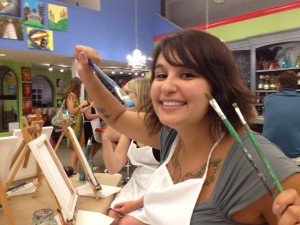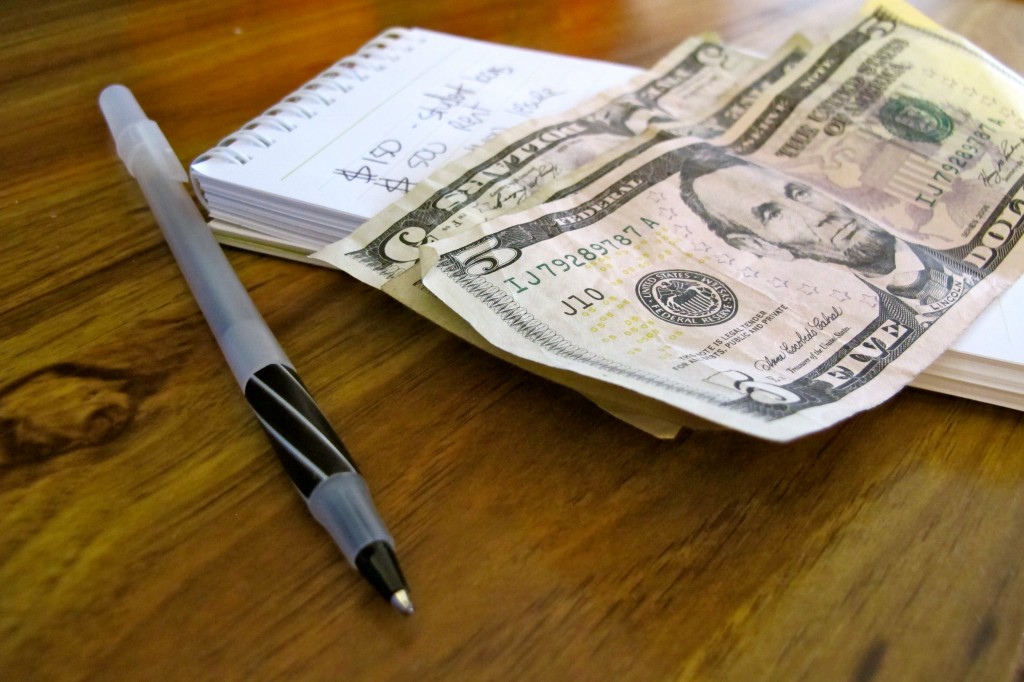How to Go Freelance and Not Starve
I’ve always been a planner. I love steady paychecks and color-coded schedules. I started a retirement account at the age of 21. For all these reasons and more, everyone (including myself) was pretty shocked when I went freelance.

Some of my freelance tools. My laptop, a Spanish book for lesson plan help, and a notebook. All that’s missing is my phone and passport.
I went freelance for many reasons, the main one being that I didn’t want to choose just one career. I had done several jobs. I loved some, liked parts of others, and hated bits and pieces of certain positions. I wasn’t ready to have one single occupation, and I really didn’t see why I had to. Now, I am a freelance whatever-the-hell-I-want and loving it. Yes, I have the occasional panic attack about earning and saving money, but overall, it’s working out quite nicely. If you are trying to figure out how to be a freelance something or other, here are a few tips of mine.
Figure out your strengths
You don’t have to do just one thing, but you do need to figure out what you are good at and how you can market those skills. You also want to make sure those skills coincide with what makes you happy. There is no point in being freelance if you are going to do jobs you hate. For example, I happen to be totally awesome at mastering restaurant procedures and three times as efficient as most people when it comes to data entry. However, both of those things make me miserable, so I don’t market them.
For me, my main strengths and interests include: Writing, editing, Spanish translation and interpretation, working with kids, and organization.
Right now, I have paid jobs as a content writer, virtual assistant, Spanish interpreter/translator, a children’s Spanish tutor, and teaching a rock school class (guitars, drums, and keyboard) to kids K-5.
Keep track of everything
I really do mean everything. I keep an excel sheet with several tabs such as taxable income, W9 earnings, tax deductions, and money to save for taxes. When money starts coming in, it’s really easy to just spend it and not think about the future, especially if you are getting paid in cash. However, you will need to pay taxes on most of your income, and it will be an unpleasant surprise come April if you haven’t planned ahead.
Keeping track of everything also helps you track payments. Unfortunately, a lot of people don’t pay on time and you’ll have to hunt them down. It’s important to keep track of your invoices so you know when payment is due.
I have an accountant friend who is basically on call for any questions I have, which is great. If you are earning a lot of money and/or buying a lot of tax-deductible things, you will probably want to hire an accountant or at least get some good accounting books so the amount of taxes you owe at the end of the year doesn’t come as a surprise.
Ask for contracts and actually read them
Pretty much every freelancer has been burned when it comes to payment. Contracts won’t fully protect from that unfortunate problem, but they definitely help. If you are going to be doing a lot of work for someone, insist on a contract. Making your agreement a little more official makes it slightly less likely that the client will flake out on your payment. Make sure you read the contracts thoroughly as well, especially clauses for termination and payment. Some contracts will state that you have to invoice to get payment and payment won’t have to be processed for a certain amount of time. Usually it’s reasonable, something along the lines of a week or two, but I have seen contracts that allow the client a full month to process an invoice. If you see something you don’t like, don’t be afraid to bring up concerns.
I have been stiffed before, for a large sum of money. I happened to have lawyer friends who tried to help, but in the end, the cost of going to small claims court would have been about as much as the money owed. I had to just accept the loss. Hopefully, this won’t happen to you. Most of the payments that I missed out on were from clients I never had a written contract or at least written agreement with. I have learned from that mistake!
Learn how to budget
Chances are, you are not going to have steady income. For someone like me, that is pretty terrifying, but that doesn’t mean it’s unmanageable. You need to figure out what bills you have regularly as well as occasional costs. Things like needing new tires for your car or paying for a year’s worth of contacts can really sneak up on you if you are only looking at your month-to-month expenses. Once you know what costs to expect, you can take a look at regular clients and estimate an income. You should always be putting a good amount of your income aside both for taxes and savings in case you have a slow month work-wise.
For me, it can be hard not to just take my money and book another trip. When I see my savings get to nice amount and I haven’t touched it in awhile, I have to force myself to remember things such as that one time I got a flat tire and ended up replacing all four. In that same month, my dog got injured and I had to pay a lot of vet bills and I had my annual eye exam and purchased new glasses, along with a bunch of other random but necessary stuff. I spent almost my entire income that month on unexpected expenses, so it was really good that I had plenty of savings to keep me afloat.
My excel sheets really help me keep my budget in line. I get a lot of payments in cash, or paypal, at different times of the month. A lot of my irregular payments are smaller amounts, but they add up. When I look at them individually, it’s too easy to just think of it as petty cash, but when I add them up and track them, I can allocate the money more effectively across my budget. I also like to use different bank accounts. My savings is not meant to cover things I want or regular bills. Once money enters my savings, it can only be removed for unexpected expenses or travel. I try to keep my checking account at a certain quantity of money. If it starts to dip too low, I take a close look at my spending and assess if it’s a spending problem or if I need to take on more work. I find tagging each transaction helps me with this process. If I see a lot of money was spent on gas, I can consider that a necessary expense. However, if I see a large sum of money was spent on eating out, I know how to fix that issue easily.
Figure out how to manage your time
I have always been pretty great with time management. I never once had an all-nighter in college because I always had my papers and projects done well ahead of the deadline. However, even people like me can get swept up in the freedom of a freelance lifestyle. It can be difficult to set your alarm when you know you don’t have to be anywhere at any particular time. It can also be difficult to resist watching Netflix all day instead of working on something more productive. One of the reasons I became freelance was to ease up on my psychotic work ethic a bit, but I have to admit, in the beginning, I took it a little too far. An article due in a week just didn’t seem as pressing as watching every season of Parks and Recreation.
I’ve found a good balance. I know when I need to get shit done and I know when I can (and maybe should) take a break. One thing I try really hard to force myself to do is to take an actual lunch break. I make myself lunch and eat it at a table, not at my desk. However, after my lunch break is over, I get back to work. I like to set up my goals for the day each morning, that way I know when it’s stopping time. If I have a clear idea of what should be accomplished in a certain amount of time, I won’t be as tempted to just take a nap or go hang out in the park with my dog.
I like to use my trusty color-coded calendar for this one. I put everything on my calendar, even seemingly pointless things like “Hanging out with Pedro.” I do this because each event is color-coded. Green means I’m charging hourly, light green means business related but no billing being done, red means a meeting or appointment, teal means fun stuff, blue means travel, etc. This way, I can take a quick look at my week/month and know how much I’ll be working, traveling, hanging out, etc. It helps keep me in line, both when it comes to working and giving myself enough down-time.
I love being a freelancer, but I cannot say it’s easy. However, I have been freelance for about 7 months now and I have yet to starve. I have taken several trips, I go out on a fairly decent basis, and I have enough money in my savings account to ward off any incoming panic attacks about income. I’d say it’s a pretty sweet life.



